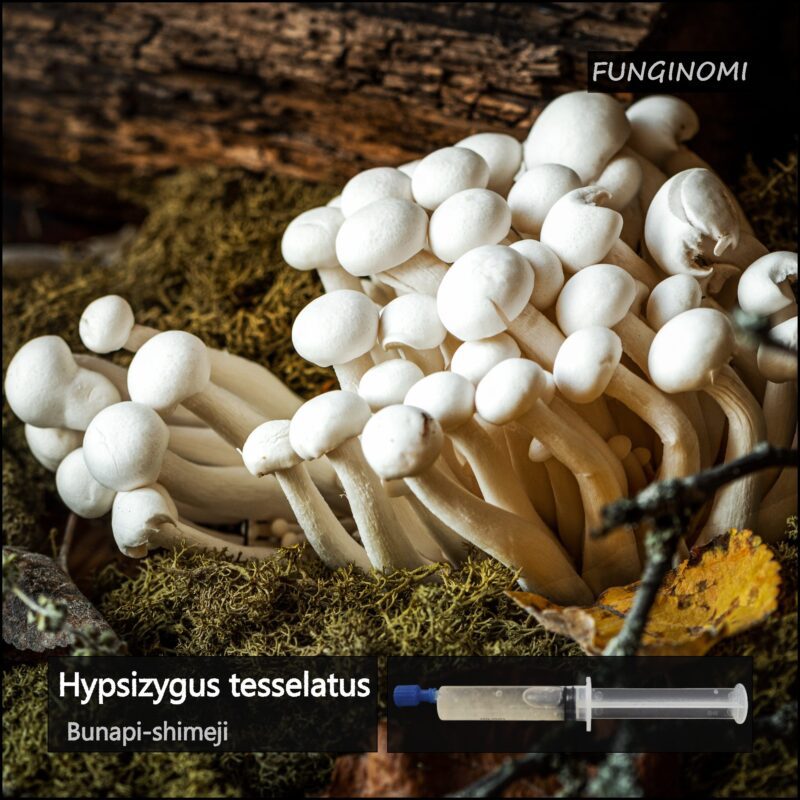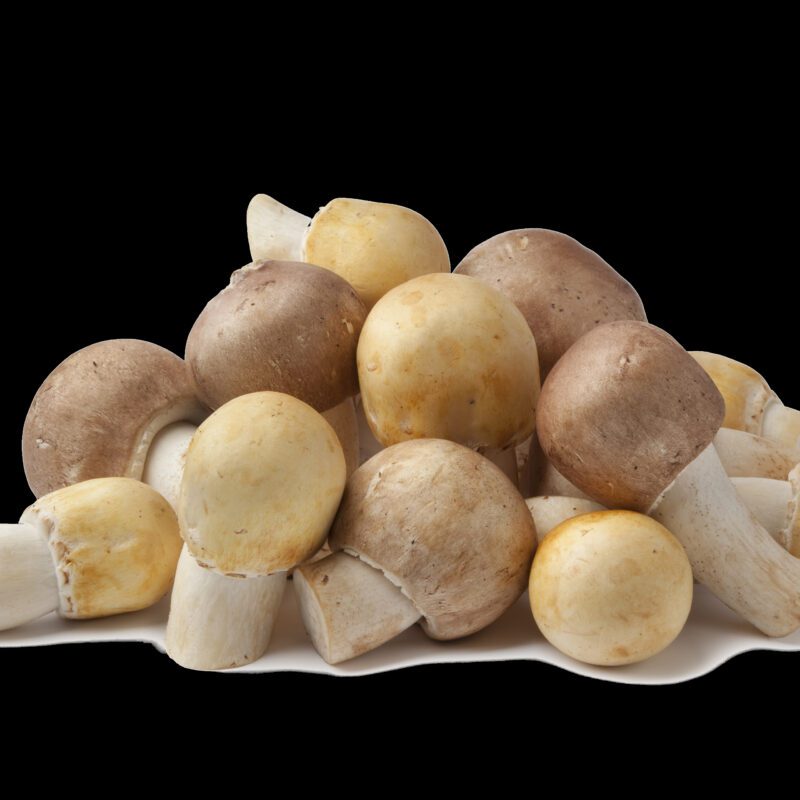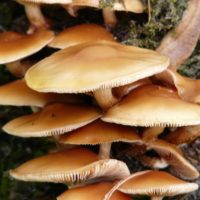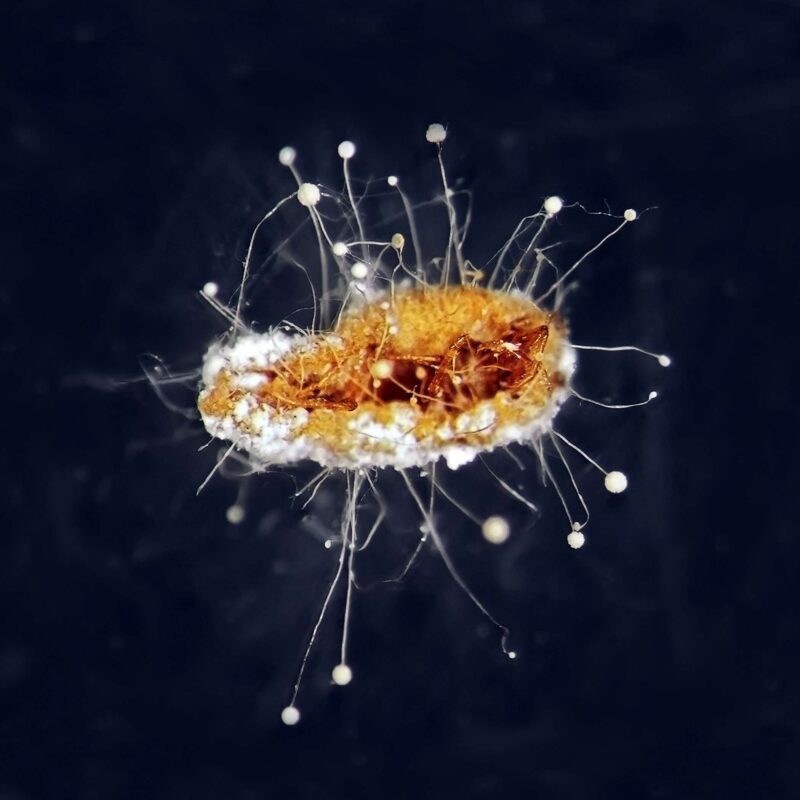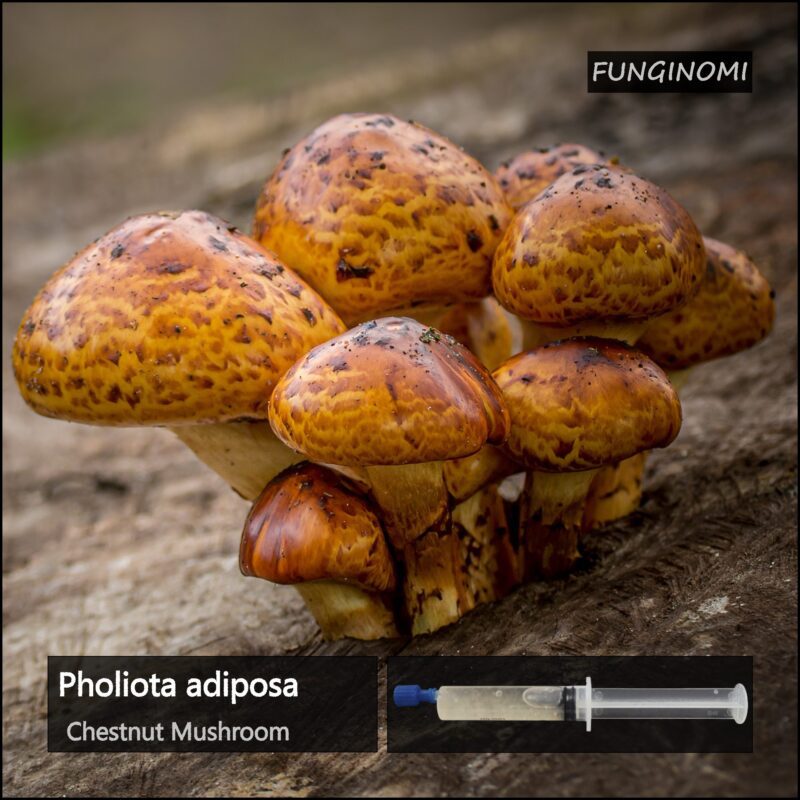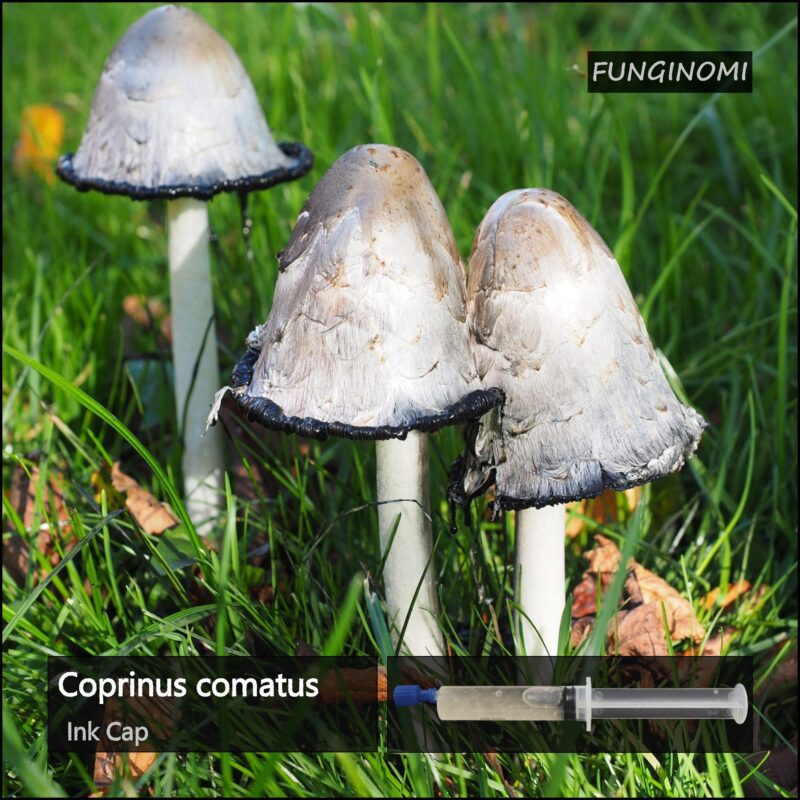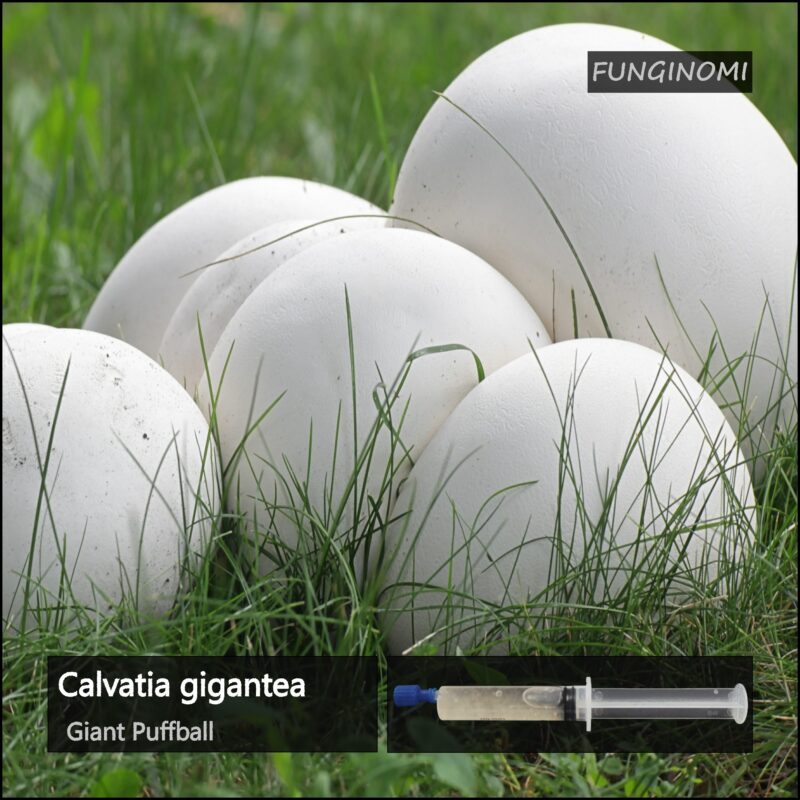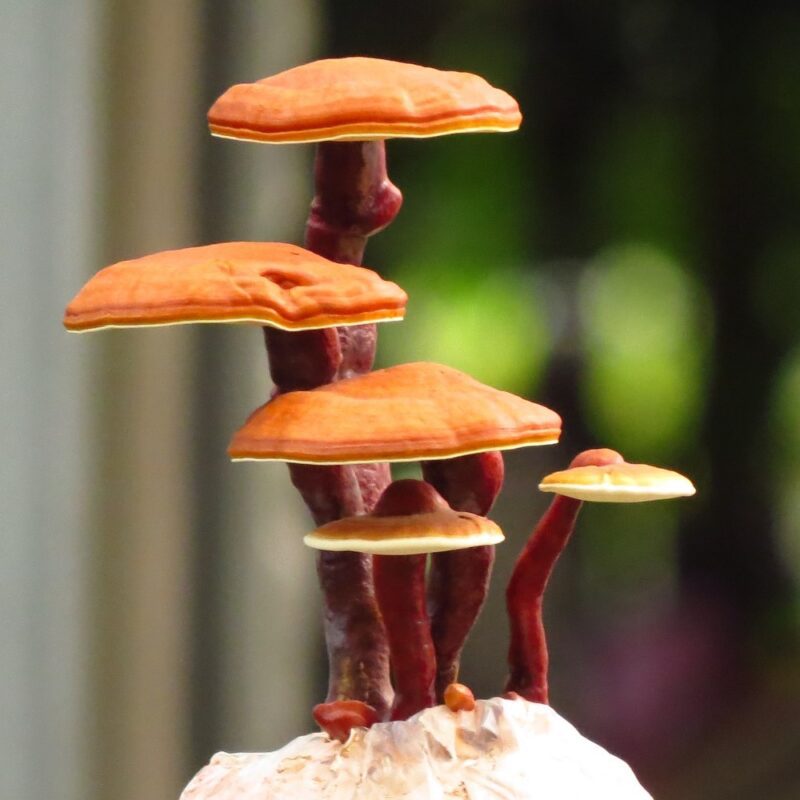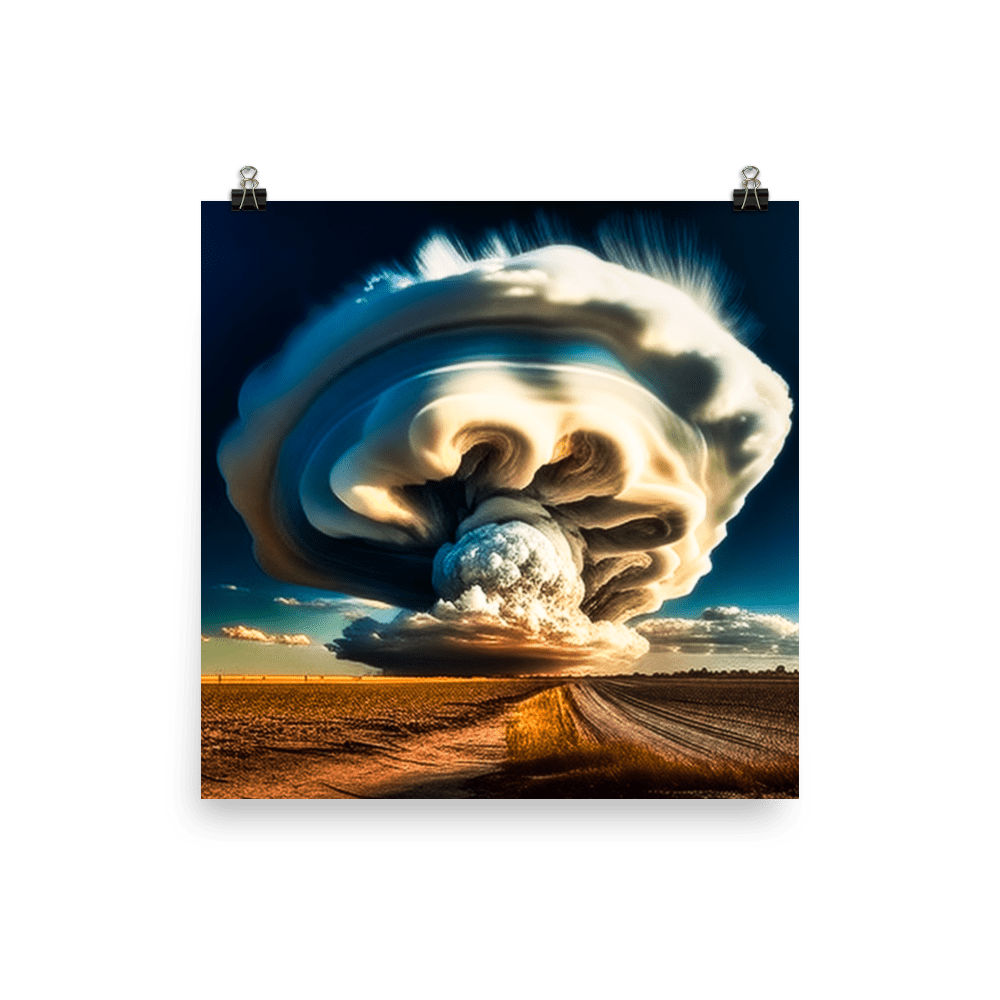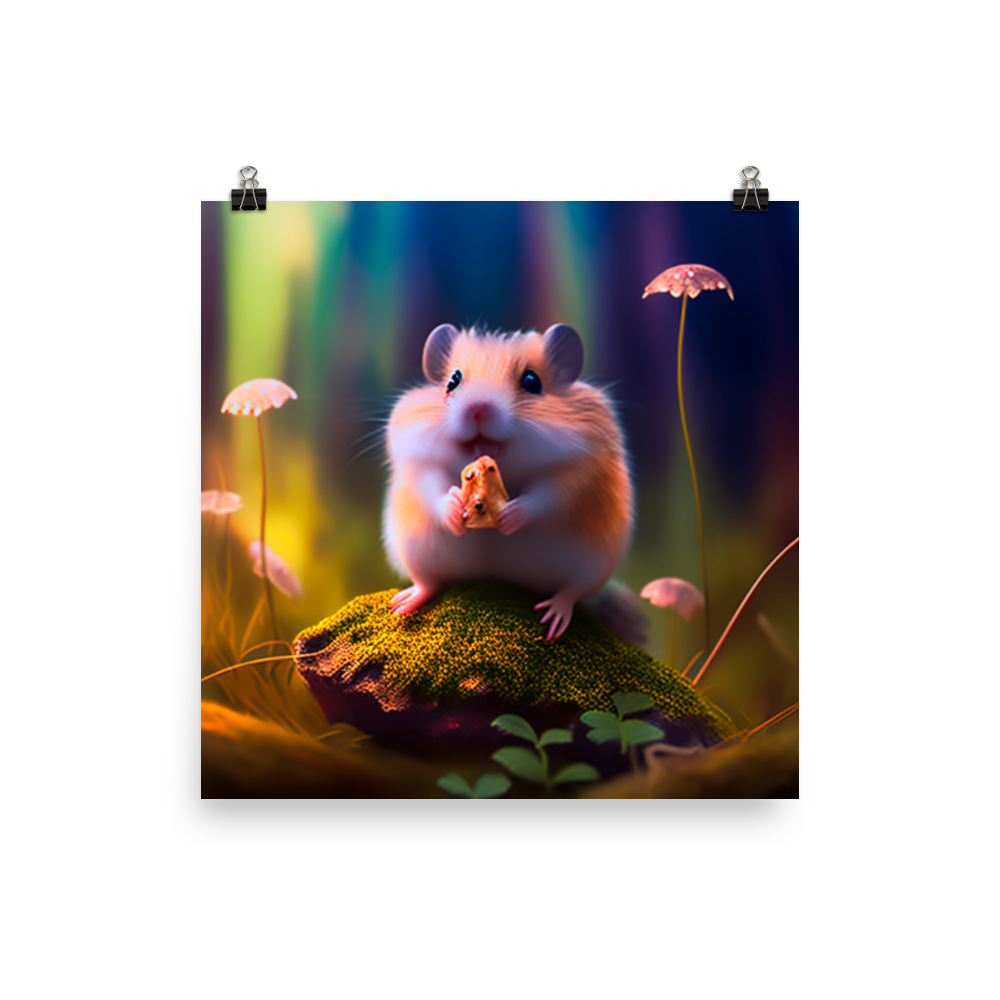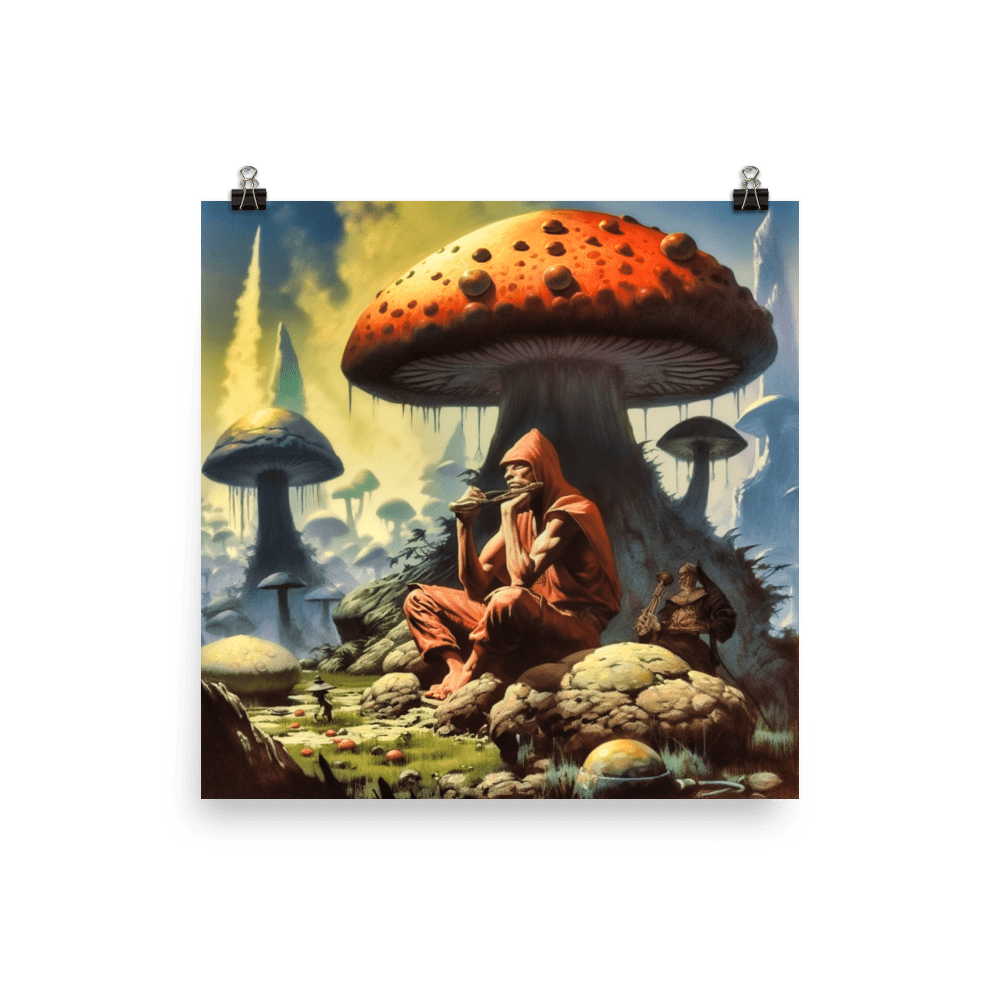Ultimate Guide to Indoor Mushroom Cultivation: A Step-by-Step Handbook
Introduction to Indoor Mushroom Cultivation

The rising popularity of indoor mushroom cultivation and its numerous benefits
The rising popularity of indoor mushroom cultivation and its numerous benefits
Welcome to the world of indoor mushroom cultivation, where the popularity is rising due to its numerous benefits. More and more people are discovering the joy of growing their own delicious and nutritious mushrooms right at home. Let’s explore why indoor mushroom cultivation has gained such a following and the range of advantages it offers.
Benefits of Indoor Mushroom Cultivation:
- Convenience: Indoor mushroom cultivation allows you to grow mushrooms year-round without being dependent on seasonal variations.
- Controlled Environment: By cultivating mushrooms indoors, you have full control over the growing conditions, including temperature, humidity, and light, resulting in optimal growth.
- Space Efficiency: Indoor cultivation requires minimal space. You can even grow mushrooms in a small apartment or basement using dedicated mushroom grow kits or DIY setups.
- Freshness and Quality: Harvesting mushrooms from your indoor setup ensures you have access to fresh and high-quality produce, free from pesticides or contaminants.
- Variety: With indoor cultivation, you have a wide range of mushroom species to choose from, such as shiitake, oyster, and lion’s mane, allowing you to experiment and enjoy diverse flavors and textures.
- Sustainable: Growing mushrooms indoors is an environmentally-friendly practice as it requires less water, space, and energy compared to conventional agriculture.
- Educational and Fun: Cultivating mushrooms indoors provides an educational opportunity to learn about the fascinating world of fungi while enjoying a rewarding and engaging hobby.
By capitalizing on the numerous benefits of indoor mushroom cultivation, you can enjoy a steady supply of fresh, flavorful, and nutritious mushrooms right at your fingertips. Let’s dive into the step-by-step process of cultivating mushrooms indoors in our comprehensive guide.
Getting Started with Indoor Mushroom Cultivation
Understanding Indoor Mushroom Cultivation
Basics of indoor mushroom cultivation, including its advantages and challenges
Indoor mushroom cultivation is an exciting venture that allows you to grow a variety of mushrooms right in the comfort of your own home. By familiarizing yourself with the basics of indoor mushroom cultivation, you can embark on a rewarding journey of growing your own fresh and flavorful mushrooms. Let’s delve into the advantages and challenges of this fascinating practice.
Advantages of Indoor Mushroom Cultivation:
- Year-round Cultivation: One of the primary benefits of indoor mushroom cultivation is the ability to grow mushrooms year-round, regardless of the external climate or season. This ensures a steady supply of fresh mushrooms whenever you desire.
- Controlled Environment: Indoor cultivation provides the advantage of maintaining a controlled environment, allowing you to adjust factors such as temperature, humidity, and light. This control optimizes mushroom growth, resulting in higher yields and better quality produce.
- Space Efficiency: Unlike traditional gardening, indoor mushroom cultivation requires minimal space. You can easily set up a dedicated area in a small corner, basement, or even use specialized mushroom grow kits designed for compact spaces.
- Diverse Mushroom Varieties: Indoor cultivation opens up a world of possibilities with a wide range of mushroom varieties to choose from, such as shiitake, oyster, lion’s mane, or reishi. This diversity allows you to experiment with different flavors, textures, and nutritional benefits.
Challenges of Indoor Mushroom Cultivation:
- Sterility and Sanitation: Maintaining a sterile and sanitary environment is crucial for successful indoor mushroom cultivation. Contamination from competing fungi or bacteria can hinder mushroom growth and lead to disappointing results. Proper sterilization techniques and cleanliness are vital.
- Precise Environmental Conditions: Mushrooms thrive under specific environmental conditions. Achieving and maintaining the ideal temperature, humidity, and light levels can be challenging and require careful monitoring and adjustments.
- Specialized Knowledge: Indoor mushroom cultivation may require some level of specialized knowledge about mushroom species, their growth requirements, and cultivation techniques. Familiarize yourself with the specific needs of the mushrooms you intend to cultivate to ensure optimal results.
- Patience and Time: Cultivating mushrooms indoors is a process that requires patience. Mushroom growth takes time, and it may take several weeks or even months before you can harvest your first crop. Dedication and perseverance are key.
By understanding the advantages and challenges of indoor mushroom cultivation, you are better equipped to embark on this rewarding journey. The next step is to familiarize yourself with the step-by-step process of setting up your indoor mushroom cultivation system, which we will explore in detail in the following sections of this guide.
Some suitable Mushroom Varieties for Indoor Growing:
Indoor mushroom cultivation offers a wide range of mushroom varieties that are well-suited for growing in controlled environments. Each variety has its unique flavors, textures, and nutritional profiles, allowing you to explore a diverse world of mushrooms right in your own home. Here are some popular mushroom varieties that thrive in indoor settings:
- Shiitake (Lentinula edodes): Shiitake mushrooms are highly sought after for their rich, earthy flavor and meaty texture. They are known for their medicinal properties and are a staple in Asian cuisine.
- Oyster (Pleurotus ostreatus): Oyster mushrooms are versatile and come in various colors, including white, yellow, and pink. They have a mild, nutty flavor and a delicate, tender texture. Oyster mushrooms are quick to grow and a great choice for beginners.
- Lion’s Mane (Hericium erinaceus): Lion’s Mane mushrooms have a unique appearance, resembling a white, cascading mane. They have a mild, seafood-like flavor and a stringy, delicate texture. Lion’s Mane mushrooms are highly regarded for their potential cognitive and neurological benefits.
- Reishi (Ganoderma lucidum): Reishi mushrooms are known as the “king of mushrooms” and have been valued in traditional medicine for centuries. They have a bitter taste and woody texture. Reishi mushrooms are typically cultivated for their medicinal properties and are commonly used in teas and extracts.
- Enoki (Flammulina velutipes): Enoki mushrooms have long, slender stems and small white caps. They have a mild, slightly fruity flavor and a crunchy texture. Enoki mushrooms are commonly used in Asian dishes and are a great addition to salads, soups, and stir-fries.
- White Button (Agaricus bisporus): White Button mushrooms are the most commonly consumed mushrooms worldwide. They have a mild, earthy flavor and a firm, meaty texture. These mushrooms are versatile and can be used in various culinary applications, from sautéing to stuffing.
Remember to research the specific growing conditions and requirements for each mushroom variety to ensure successful cultivation. By selecting suitable mushroom varieties, you can enjoy a diverse and flavorful harvest from your indoor mushroom cultivation endeavors.
Essential Equipment and Supplies
Essential Equipment and Supplies for Successful Indoor Mushroom Cultivation:
To set yourself up for successful indoor mushroom cultivation, it’s important to gather the necessary equipment and supplies. Having the right tools will help create an optimal growing environment and streamline the cultivation process. Here is a list of essential equipment and supplies you will need:
- Mushroom Spawn: Mushroom spawn serves as the starting point for cultivating mushrooms. It consists of mycelium-infused substrate, such as grains or sawdust. You can either purchase ready-to-use spawn or create your own.
- Growing Containers: Choose growing containers suitable for the mushroom variety you intend to cultivate. Common options include plastic bags, trays, or specialized mushroom grow kits. Make sure the containers are clean and have proper drainage holes.
- Substrate Materials: Mushrooms require a substrate to grow on. The substrate provides essential nutrients and a medium for mycelium colonization. Substrate materials can include straw, wood chips, sawdust, coffee grounds, or a blend of various organic materials.
- Sterilization Equipment: Maintaining a sterile environment is crucial for successful mushroom cultivation. Equipment such as a pressure cooker or an autoclave helps sterilize the substrate, containers, and tools to prevent contamination from unwanted microorganisms.
- Hygrometer and Thermometer: A hygrometer measures humidity levels, while a thermometer monitors the temperature. These tools help you maintain optimal environmental conditions for mushroom growth.
- Misting Bottle: A misting bottle or a small sprayer is useful for maintaining adequate moisture levels in the growing environment. Mushrooms require a humid environment to thrive.
- Light Source: Although mushrooms don’t require direct sunlight, ambient light is essential for proper fruiting and development. Natural daylight or artificial light sources like fluorescent or LED lights can be used to provide the necessary light.
- Clean Work Area: Ensure you have a clean and organized work area free from contaminants. Use disinfectants or alcohol wipes to sanitize your work surfaces, gloves, and any tools you use during the cultivation process.
- Water Source: Access to a clean water source is necessary for hydrating the substrate, misting, and maintaining proper humidity levels. Make sure you have a reliable source of water for your cultivation setup.
- Spray Bottle: A spray bottle filled with clean, non-chlorinated water is useful for misting the mushrooms and maintaining moisture levels. Avoid using chlorinated water, as it can negatively affect mushroom growth.
- Ventilation System: Proper air circulation is important for maintaining a healthy growing environment. Consider using a fan or implementing a ventilation system to ensure fresh air exchange and prevent the buildup of stagnant air.
Remember, the specific equipment and supplies needed may vary depending on the mushroom variety and cultivation method you choose. By gathering these essential items, you will be well-prepared to embark on your indoor mushroom cultivation journey.
Preparing the Growing Space
Setting Up an Ideal Environment for Mushroom Growth
Creating an ideal environment for mushroom growth is crucial to ensure healthy and productive cultivation. By paying attention to key factors such as temperature, lighting, and humidity, you can optimize the conditions for mushroom growth. Here’s a step-by-step guide to help you set up the perfect growing space:
- Choose a Suitable Location: Select a location in your home that provides stability and is free from direct sunlight, drafts, and extreme temperature fluctuations. A basement, spare room, or closet can work well for indoor mushroom cultivation.
- Temperature: Different mushroom species have specific temperature requirements, but a general range of 60°F to 75°F (15°C to 24°C) is suitable for many varieties. Use a thermometer to monitor and maintain a consistent temperature in the growing area. Consider using a space heater or cooling system if necessary.
- Lighting: While mushrooms don’t require direct sunlight, they do need some ambient light to initiate fruiting. Indirect natural light from a window or artificial light sources like fluorescent or LED lights can be used. Aim for approximately 12 hours of light per day to simulate a day-night cycle.
- Humidity: Mushrooms thrive in a humid environment. The optimal humidity level for most species is around 85% to 95%. To maintain proper humidity, consider using a hygrometer to monitor levels. Increase humidity by misting the growing area with clean, non-chlorinated water using a spray bottle. Alternatively, you can use a humidifier or place trays of water near the growing containers to increase moisture.
- Air Circulation: Proper air circulation is essential to prevent the buildup of stale air and promote healthy mushroom growth. Consider implementing a ventilation system or using a fan to ensure fresh air exchange. Be cautious not to create excessive airflow, which can dry out the substrate.
- Sterilization: Before introducing your mushroom spawn to the growing space, ensure all equipment, containers, and surfaces are sterilized. Use a pressure cooker or autoclave to sterilize substrates and materials, and wipe down surfaces with disinfectants or alcohol wipes.
- Maintain Cleanliness: Throughout the cultivation process, maintain a clean and sanitized environment. Regularly clean the growing area, tools, and your hands to minimize the risk of contamination.
Remember to refer to specific growing guides or instructions for the mushroom species you are cultivating, as each variety may have unique environmental requirements. By creating an ideal environment with proper temperature, lighting, and humidity, you provide the optimal conditions for mushrooms to thrive and produce abundant harvests.
Tips for Selecting the Appropriate Location and Ensuring Proper Ventilation
Selecting the right location and ensuring proper ventilation are crucial elements in creating an ideal environment for successful indoor mushroom cultivation. Consider the following tips to optimize your growing space:
1. Location Selection:
- Stability: Choose a location that offers stability and minimal temperature fluctuations. Avoid areas that are exposed to direct sunlight, as this can lead to overheating. Basements, spare rooms, or closets are often suitable options.
- Space Availability: Ensure you have enough space to accommodate your growing containers or mushroom grow kits. Consider the height of the space as some mushroom varieties may grow tall or require stacking containers.
- Access to Utilities: Ensure you have access to necessary utilities like electricity and water. This will facilitate the use of equipment such as lighting fixtures, fans, and misting systems.
2. Proper Ventilation:
- Fresh Air Exchange: Adequate air circulation is essential to prevent the buildup of stagnant air and to maintain a healthy growing environment. Install a small fan or set up a ventilation system to promote fresh air exchange. Avoid excessive airflow, as it can dry out the substrate or disrupt the delicate mushroom growth.
- Air Filters: Consider using air filters or purifiers to minimize the risk of airborne contaminants that could affect mushroom growth. These filters help remove dust, spores, and other particles from the air, ensuring a cleaner growing environment.
- Ventilation Timing: Determine the optimal timing for ventilation based on the specific needs of your mushroom species. Some varieties may require more or less airflow during different stages of growth. Adjust the timing and intensity of ventilation accordingly.
- Properly Sealed Growing Area: Ensure the growing area is properly sealed to prevent the entry of pests or contaminants. Check for any gaps or openings that may compromise the controlled environment, and seal them off as needed.
By carefully selecting the appropriate location and ensuring proper ventilation, you create an environment that promotes healthy mushroom growth. The right location provides stability and an optimal temperature range, while proper ventilation prevents the buildup of stale air and supports fresh air exchange. Remember to monitor the conditions regularly and make adjustments as necessary to maintain an ideal growing environment.
Choosing Mushroom Varieties for Indoor Cultivation
Popular Indoor Mushroom Species
Comprehensive list of indoor mushroom species commonly cultivated, along with their growth requirements and characteristics
Selecting the Right Mushroom Species
Selecting the Right Mushroom Species: Choosing the Most Suitable Variety
Choosing the right mushroom species is a crucial step in successful indoor cultivation. Consider the following factors – preferences, available space, and cultivation experience – to help you select the most suitable variety for your needs. Here’s a step-by-step guide to assist you:
- Identify Your Preferences:
- Flavor and Texture: Determine the flavors and textures you enjoy. Do you prefer mushrooms with a mild, earthy taste or ones with a stronger, more distinctive flavor? Consider textures ranging from delicate and tender to meaty and firm.
- Culinary Uses: Think about the specific culinary applications you have in mind. Some mushrooms are versatile and can be used in a wide range of dishes, while others have unique characteristics that lend themselves to particular recipes.
- Assess Available Space:
- Indoor Space: Evaluate the size and layout of your indoor space designated for mushroom cultivation. Some mushrooms require more vertical space or specific container arrangements, so ensure your space can accommodate their growth.
- Growing Containers: Consider the type and quantity of growing containers you have or are willing to invest in. Some mushrooms can be grown in small, compact setups, while others may require larger containers or special equipment.
- Consider Cultivation Experience:
- Beginner-Friendly: If you’re new to mushroom cultivation, opt for species known to be beginner-friendly, such as oyster mushrooms. These varieties are resilient, fast-growing, and have forgiving cultivation requirements.
- Intermediate or Advanced: For those with more experience, you may be interested in experimenting with species that have specific growth needs or unique characteristics, such as lion’s mane or reishi mushrooms.
- Research and Consult:
- Variety Research: Conduct thorough research on different mushroom species. Explore their growth requirements, including temperature, humidity, substrate preferences, and time to maturity. Consider the level of effort and attention required for each variety.
- Expert Advice: Seek guidance from experienced cultivators or mushroom cultivation communities. They can provide valuable insights and recommendations based on their own experiences.
- Make an Informed Decision:
- Evaluate Compatibility: Compare your preferences, available space, and cultivation experience with the characteristics of various mushroom species. Shortlist the ones that align closely with your requirements and resources.
- Choose Multiple Varieties: If you have the space and capacity, consider cultivating multiple mushroom species simultaneously. This allows you to enjoy a diverse range of flavors, textures, and culinary possibilities.
Remember, selecting the right mushroom species is a personal choice influenced by your taste preferences, available space, and cultivation expertise. By considering these factors and conducting thorough research, you can make an informed decision that sets you up for a successful and rewarding indoor mushroom cultivation experience.
Highlight the unique qualities of each species and their potential uses
- Shiitake Mushroom (Lentinula edodes):
- Unique Qualities: Rich, earthy flavor; meaty texture; distinct aroma; versatility in culinary applications.
- Potential Uses: Ideal for stir-fries, soups, sauces, and sautés; popular in Asian cuisine; valued for its medicinal properties.
- Oyster Mushroom (Pleurotus ostreatus):
- Unique Qualities: Mild, nutty flavor; delicate, tender texture; rapid growth; adaptable to various substrates.
- Potential Uses: Suitable for stir-fries, pasta dishes, risottos, and salads; used in vegetarian and vegan recipes; great for beginners due to ease of cultivation.
- Lion’s Mane Mushroom (Hericium erinaceus):
- Unique Qualities: Unique appearance with cascading white “mane”; seafood-like flavor; stringy, delicate texture.
- Potential Uses: Ideal for stir-fries, soups, and stews; can be shredded and used as a substitute for seafood in vegetarian dishes; potential cognitive and neurological benefits.
- Reishi Mushroom (Ganoderma lucidum):
- Unique Qualities: Bitter taste; woody texture; highly valued for its medicinal properties; used in herbal teas and extracts.
- Potential Uses: Often brewed into teas or incorporated into health supplements; reputed for immune-boosting and stress-reducing properties.
- Enoki Mushroom (Flammulina velutipes):
- Unique Qualities: Long, slender stems with small white caps; mild, slightly fruity flavor; crunchy texture.
- Potential Uses: Often used in Asian cuisine, especially in soups, stir-fries, and hot pots; adds a delicate crunch to salads and sandwiches.
- White Button Mushroom (Agaricus bisporus):
- Unique Qualities: Mild, earthy flavor; firm, meaty texture; widely consumed worldwide; versatile in various culinary applications.
- Potential Uses: Suitable for raw or cooked consumption; perfect for salads, pizzas, omelets, and stuffed mushroom dishes; adaptable to various cooking methods.
- Maitake Mushroom (Grifola frondosa):
- Unique Qualities: Robust, earthy flavor; frilly texture; known as the “dancing mushroom” due to its appearance.
- Potential Uses: Excellent in stir-fries, sautés, and soups; adds depth of flavor to sauces and gravies; potential health benefits attributed to its compounds.
- King Oyster Mushroom (Pleurotus eryngii):
- Unique Qualities: Meaty texture; mild, nutty flavor; large, distinctive cap shape.
- Potential Uses: Suitable for grilling, roasting, and sautéing; popular meat substitute in vegetarian and vegan dishes; holds its shape well during cooking.
- Pioppino Mushroom (Agrocybe aegerita):
- Unique Qualities: Earthy, nutty flavor; firm texture; versatile in various dishes.
- Potential Uses: Ideal for stir-fries, pasta dishes, risottos, and soups; pairs well with meats, seafood, and vegetables.
Each mushroom species offers its own set of unique qualities and potential uses, allowing for diverse culinary creations. Explore these characteristics and incorporate them into your recipes to discover the flavors, textures, and health benefits associated with each mushroom variety.
Cultivation Techniques and Procedures
Mushroom Spawn: Understanding and Sourcing
The concept of mushroom spawn, its importance in cultivation, and the various types available
Mushroom spawn plays a crucial role in the cultivation process, serving as the starting point for mushroom growth. It is essentially a substrate that has been inoculated with mycelium, the thread-like vegetative part of the fungus. Understanding the concept of mushroom spawn, its importance, and the different types available is essential for successful cultivation. Here’s a breakdown:
1. What is Mushroom Spawn? Mushroom spawn refers to a substrate that has been infused with mycelium, which acts as the “seed” for mushroom cultivation. The mycelium, composed of interconnected hyphae, is responsible for nutrient absorption and ultimately forms the fruiting bodies we know as mushrooms.
2. Importance of Mushroom Spawn:
- Consistency and Reliability: Spawn ensures uniform growth and predictable results in mushroom cultivation.
- Faster Colonization: Using spawn accelerates the colonization process, minimizing the risk of contamination by competing organisms.
- Genetic Stability: Spawn preserves the desirable traits of the mushroom species, ensuring consistent characteristics in subsequent generations.
3. Types of Mushroom Spawn:
- Grain Spawn: Made by inoculating sterilized grains (such as rye or wheat) with mushroom mycelium. Grain spawn is commonly used for its versatility and ease of handling.
- Sawdust Spawn: Produced by mixing mushroom mycelium with sterilized sawdust. Sawdust spawn is suitable for certain mushroom species, especially those that naturally grow on wood substrates.
- Plug Spawn: Small wooden dowels or plugs infused with mushroom mycelium. Plug spawn is commonly used for inoculating logs or stumps for outdoor mushroom cultivation.
- Liquid Spawn: A liquid culture containing mushroom mycelium. Liquid spawn is convenient for inoculating larger quantities of substrate or for use in specialized cultivation methods.
4. Sourcing Mushroom Spawn:
- Commercial Suppliers: Many specialized suppliers offer a wide range of mushroom spawn varieties. Research reputable suppliers and choose those known for providing high-quality spawn.
- Mycology Communities: Connect with local mycology communities or mushroom cultivation enthusiasts who may be willing to share or trade spawn.
- Self-Production: Advanced cultivators can produce their own spawn using sterile laboratory techniques. However, this requires specific knowledge and equipment.
When sourcing mushroom spawn, ensure that it is fresh, viable, and free from contaminants. Always follow the recommended storage instructions to maintain the spawn’s viability.
Understanding mushroom spawn, its significance in cultivation, and the available types will empower you to make informed decisions when selecting and sourcing the appropriate spawn for your indoor mushroom cultivation endeavors.
Acquiring Quality Mushroom Spawn from Reliable Sources: Expert Tips
To ensure successful indoor mushroom cultivation, it’s crucial to acquire quality mushroom spawn from reliable sources. Here are some expert tips to help you find and obtain the best spawn for your cultivation needs:
- Research Reputable Suppliers: Take the time to research and identify reputable suppliers known for their expertise and quality spawn. Look for suppliers with positive customer reviews, extensive experience, and a wide selection of mushroom species.
- Seek Recommendations: Ask fellow cultivators, local mycology communities, or gardening groups for recommendations on reliable suppliers. Experienced growers can provide valuable insights and point you in the right direction.
- Check Spawn Quality: When purchasing spawn, ensure it is fresh, healthy, and free from contaminants. Look for spawn that appears clean, well-colonized, and without signs of mold or bacterial growth. Quality suppliers take meticulous care in producing and packaging their spawn.
- Consider Spawn Types: Consider the specific spawn type suitable for your chosen mushroom species and cultivation method. Different mushrooms may thrive better with grain spawn, sawdust spawn, plug spawn, or liquid spawn. Ensure the supplier offers the appropriate spawn type for your needs.
- Evaluate Spawn Viability: Before purchasing, inquire about the spawn’s viability and expected shelf life. Quality suppliers provide spawn that is fresh and capable of successfully colonizing the chosen substrate. Longer viability ensures a higher chance of successful cultivation.
- Review Cultivation Resources: Look for suppliers who offer additional cultivation resources, such as guides, tutorials, or customer support. These resources can be valuable references for beginners or those seeking to expand their knowledge.
- Consider Local Suppliers: If available, consider purchasing from local suppliers. Local sources may offer fresher spawn, reduce shipping time, and provide regionally adapted strains that perform well in your area’s climate.
- Verify Spawn Certification: For certain applications or certifications, such as organic cultivation, you may need to source certified organic spawn. Check if the supplier offers certified options or adheres to organic cultivation practices.
- Compare Prices: While quality is essential, it’s also wise to compare prices among different suppliers. Consider the spawn’s quality, reputation, and additional services provided by the supplier to make an informed decision.
- Start Small and Test: If you’re unsure about a supplier’s quality, consider purchasing a small quantity of spawn initially to test its viability and performance. Once you establish trust and confidence, you can confidently order larger quantities.
Remember, acquiring quality mushroom spawn from reliable sources sets the foundation for a successful indoor cultivation journey. Invest time in research, seek recommendations, and verify the spawn’s quality and viability. By obtaining top-notch spawn, you increase your chances of achieving healthy mycelial growth and a bountiful harvest of delicious mushrooms.
Substrate Preparation and Sterilization
Substrate Preparation and Sterilization: A Step-by-Step Guide
Preparing the growing substrate is a critical step in indoor mushroom cultivation. Proper selection and sterilization of the substrate materials are key to creating a favorable environment for mushroom mycelium growth. Follow this step-by-step guide to ensure optimal substrate preparation:
- Choose the Right Substrate: Different mushroom species have specific substrate preferences. Common substrates include straw, sawdust, wood chips, coffee grounds, or a combination of these. Research the preferred substrate for your chosen mushroom species.
- Gather the Materials: Collect the necessary materials for substrate preparation, ensuring they are of high quality and free from contaminants. Use fresh, organic materials whenever possible.
- Prepare the Substrate Mixture: If using a combination of substrates, follow a suitable recipe or ratio recommended for your mushroom species. Measure the materials accurately to maintain consistency and ensure proper nutrition for the mycelium.
- Moisturize the Substrate: Adjust the moisture content of the substrate by adding water or other moisture sources. Aim for a moisture level that resembles a damp sponge, ensuring the substrate is evenly moistened.
- Mix and Blend: Thoroughly mix the substrate ingredients to achieve uniform moisture distribution and substrate consistency. Use clean, gloved hands or a sterilized tool to avoid introducing contaminants.
- Load the Substrate into Containers: Transfer the substrate mixture into containers suitable for mushroom cultivation, such as plastic bags, trays, or buckets. Fill the containers to the desired depth, leaving some headspace for the mycelium to grow.
- Sterilize the Substrate: Proper sterilization is crucial to eliminate competing organisms and pathogens that can hinder mushroom growth. Choose the appropriate sterilization method based on your substrate type, such as pressure cooking, autoclaving, or pasteurization. Follow the specific instructions and duration recommended for your chosen method.
- Cool and Inoculate: After sterilization, allow the substrate to cool completely. Once cooled, inoculate the substrate with mushroom spawn by evenly distributing it throughout the substrate. Maintain a sterile environment during this process to prevent contamination.
- Seal and Incubate: Seal the containers with the inoculated substrate using breathable materials like micro-pore tape or filter patches to allow gas exchange while preventing contamination. Place the containers in a suitable incubation area with controlled temperature and humidity according to the requirements of your mushroom species.
- Monitor and Maintain: Regularly monitor the substrate for signs of colonization, such as the appearance of white mycelial growth. Maintain appropriate temperature, humidity, and air circulation to create an optimal environment for mycelium expansion.
By following these steps and ensuring proper substrate selection and sterilization, you create a favorable environment for the growth of mushroom mycelium. Remember to maintain cleanliness and hygiene throughout the process to minimize the risk of contamination and maximize your chances of a successful harvest.
Step-by-step instructions to ensure the substrate is free from contaminants
To ensure the substrate is free from contaminants and create an environment conducive to successful mushroom cultivation, follow these step-by-step instructions:
- Clean Working Environment: Start by cleaning your working area thoroughly. Remove any clutter, dust, or potential sources of contamination. Disinfect the surfaces and tools you will be using.
- Personal Hygiene: Wash your hands thoroughly with soap and warm water before handling any substrate or equipment. Wear clean, disposable gloves throughout the process to minimize the risk of introducing contaminants.
- Sterilize Equipment: Clean and sterilize all equipment that will come into contact with the substrate. This includes containers, mixing tools, measuring devices, and any other items. Sterilize them using heat (e.g., boiling water) or by wiping them with a sterilizing solution (e.g., diluted bleach or rubbing alcohol).
- Prepare a Sterile Workspace: If possible, create a small, enclosed sterile workspace within your clean working area. This can be achieved using a clean, disinfected plastic storage bin or a laminar flow hood, if available.
- Sterilization of Substrate: Follow the appropriate sterilization method for your chosen substrate, such as pressure cooking, autoclaving, or pasteurization. Ensure the substrate reaches the required temperature and duration to effectively kill off contaminants. Monitor and adjust the sterilization process as needed.
- Cooling Process: After sterilization, allow the substrate to cool completely before handling. Place the containers in a clean, draft-free area to cool naturally. Avoid opening or disturbing the containers during this cooling period to prevent contamination.
- Maintain Sterility: Once cooled, transfer the containers to the sterile workspace or work quickly in a clean, controlled environment. Avoid exposing the substrate to open air or contaminants as much as possible.
- Inoculation in a Clean Environment: Open the containers in the sterile workspace or under a laminar flow hood. Handle the mushroom spawn and substrate carefully to minimize the risk of contamination. Use clean, sterilized tools for inoculation, ensuring that the spawn is evenly distributed throughout the substrate.
- Seal and Secure Containers: Seal the containers immediately after inoculation using breathable materials such as micro-pore tape or filter patches. Ensure a secure and airtight seal to prevent contamination from entering while allowing for gas exchange.
- Proper Storage and Incubation: Place the sealed containers in a clean and controlled environment suitable for incubation. Maintain the recommended temperature and humidity levels specific to your mushroom species. Regularly monitor the containers for any signs of contamination and address them promptly if detected.
By following these steps and maintaining strict cleanliness and sterility throughout the process, you significantly reduce the risk of contaminants compromising your substrate. This enhances the chances of successful mycelium growth and ultimately leads to a healthy and abundant mushroom harvest.
Inoculation and Incubation
Essential Steps for Mushroom Cultivation
The inoculation process is a crucial step in indoor mushroom cultivation, where you introduce mushroom spawn into the prepared substrate to initiate mycelium growth. Various techniques, such as grain spawn and agar cultures, can be employed for successful inoculation. Here’s an overview of these techniques:
- Grain Spawn Inoculation:
- Prepare Grain Spawn: Start by acquiring or preparing sterilized grains (e.g., rye, wheat, or millet) that have been inoculated with mushroom mycelium. Grain spawn acts as the carrier for mycelium, providing nutrients and facilitating its growth.
- Select Inoculation Points: Identify suitable inoculation points within the prepared substrate. These can be evenly spaced holes, slits, or patches, depending on the substrate type and container used.
- Inoculation Process: Using sterile techniques, insert small pieces of the grain spawn into the inoculation points, ensuring they make contact with the substrate. Carefully seal the inoculation points afterward to prevent contamination.
- Distribution and Quantity: Distribute the grain spawn evenly throughout the substrate, maintaining a sufficient quantity for robust mycelium growth. Follow specific guidelines for the recommended spawn-to-substrate ratio of your chosen mushroom species.
- Agar Culture Inoculation:
- Prepare Agar Cultures: Agar cultures are created by transferring a small piece of mycelium from a previously grown culture onto a sterilized agar medium. The agar medium provides a nourishing surface for mycelium growth and helps isolate and propagate desired mushroom strains.
- Select Inoculation Tools: Use sterile tools like scalpels, inoculation loops, or sterile swabs for handling the agar cultures and performing the inoculation process.
- Inoculation Techniques: There are various techniques for agar culture inoculation, including streaking, spot inoculation, or transferring small wedges of mycelium. Each technique aims to introduce the mycelium onto the substrate or into fresh agar plates.
- Incubation of Agar Cultures: After inoculation, seal the agar culture containers with breathable lids or parafilm to allow gas exchange while preventing contamination. Place the cultures in a clean and controlled incubation environment suitable for mycelium growth.
- Incubation Process:
- Maintain Optimal Conditions: Once the substrate is inoculated, move the containers to an incubation area with the optimal temperature and humidity requirements specific to your mushroom species. Maintain these conditions consistently throughout the incubation period.
- Monitor Progress: Regularly check the containers for signs of mycelium growth, typically appearing as white, fuzzy patches or strands. Monitor for any signs of contamination and take immediate action if necessary.
- Patience and Patience: The incubation period varies depending on the mushroom species and environmental conditions. It can range from a few days to several weeks. Be patient and allow sufficient time for the mycelium to colonize the substrate fully.
Remember, practicing strict sterile techniques during inoculation and maintaining a clean and controlled environment during incubation are vital for successful mushroom cultivation. Whether using grain spawn or agar cultures, following proper inoculation procedures ensures healthy mycelium growth, setting the stage for a successful mushroom harvest.
Optimizing the Incubation Period for Mycelium Growth
During the incubation period, it is crucial to provide optimal conditions to support healthy mycelium growth. Here’s a step-by-step guide on how to maintain these conditions and maximize your chances of a successful mushroom cultivation:
- Create a Suitable Incubation Environment:
- Find a designated area for incubation that offers stable environmental conditions. This can be a spare room, closet, or dedicated grow tent.
- Ensure the area is clean, well-ventilated, and free from potential sources of contamination such as mold, pests, or drafts.
- Temperature Control:
- Identify the optimal temperature range for your specific mushroom species. Most species thrive within a range of 18-24°C (64-75°F), but it can vary. Research the temperature requirements for your chosen species.
- Use thermometers or temperature controllers to monitor and maintain a consistent temperature throughout the incubation period.
- Avoid drastic temperature fluctuations, as they can stress the mycelium and impede its growth.
- Humidity Regulation:
- Mycelium requires a humid environment to flourish. Aim for a relative humidity (RH) level between 80% and 90% during incubation.
- Use a hygrometer to measure the humidity level accurately. If the humidity is too low, increase it by misting the air or using a humidifier. Conversely, if it’s too high, improve airflow to reduce moisture buildup.
- Air Exchange:
- Proper air circulation is vital to maintain oxygen levels and prevent the buildup of carbon dioxide. Adequate air exchange also helps remove excess moisture and minimize the risk of contamination.
- Provide passive airflow by slightly cracking open container lids or using breathable materials like micro-pore tape or filter patches.
- Avoid excessive airflow or drafts, as they can dry out the substrate or introduce contaminants.
- Light Exposure:
- During the incubation period, most mushroom species do not require significant light exposure. In fact, some species prefer darkness.
- Place the incubation containers in a dark or dimly lit area to promote mycelium growth. Covering the containers with a black plastic bag or wrapping them in foil can help maintain darkness.
- Monitor Progress:
- Regularly check the incubation containers for signs of mycelium growth. This typically appears as white, fuzzy patches or strands spreading throughout the substrate.
- Be patient during the incubation period, as it can vary depending on the mushroom species. Refer to species-specific guidelines for estimated colonization times.
- Addressing Contamination:
- Monitor the incubation containers for any signs of contamination, such as unusual colors, odors, or molds that differ from the expected mycelium growth.
- If contamination is detected, act promptly to isolate and remove the affected containers to prevent further spread. Sterilize or dispose of contaminated materials appropriately.
By following these steps and diligently maintaining optimal temperature, humidity, air exchange, and light conditions during the incubation period, you provide the ideal environment for mycelium growth. Regular monitoring and addressing any potential contamination issues contribute to a successful cultivation journey.
Fruiting and Harvesting
Creating the Ideal Conditions for Mushroom Growth
Fruiting is the stage where mushroom pins develop into mature mushrooms ready for harvest. To ensure a successful fruiting process, it is essential to provide the right conditions for your mushrooms. Here’s a breakdown of the key factors to consider:
- Lighting:
- Indirect light is typically beneficial for mushroom fruiting. Some species require a small amount of ambient light, while others prefer complete darkness.
- If needed, provide low-intensity lighting using artificial sources such as LED grow lights or fluorescent bulbs. Use warm white or blue spectrum lights for best results.
- Avoid exposing mushrooms to direct sunlight or bright, intense light, as it can dry out the fruiting bodies and hinder their development.
- Temperature:
- Different mushroom species have varying temperature requirements for fruiting. Refer to species-specific guidelines for optimal temperature ranges.
- Generally, the fruiting temperature is slightly lower than the incubation temperature. It typically ranges from 12-18°C (54-64°F) but can vary depending on the species.
- Maintain a consistent temperature within the recommended range to promote proper fruiting. Drastic fluctuations can disrupt growth and lead to irregular or stalled development.
- Humidity:
- Humidity plays a crucial role in mushroom fruiting. It helps maintain moisture levels, promotes proper mushroom development, and prevents drying out.
- Aim for a relative humidity (RH) level between 85% and 95% during fruiting. Use a hygrometer to measure and adjust humidity accurately.
- Increase humidity by misting the air with clean water, using a humidifier, or placing trays filled with water near the growing containers. Regularly monitor and adjust humidity levels as needed.
- Fresh Air Exchange:
- Fresh air exchange is vital for proper mushroom growth and the removal of carbon dioxide. It helps stimulate mushroom formation and prevents the buildup of stale air.
- Provide gentle air circulation by using fans or opening windows slightly. Avoid direct drafts that may dry out the mushrooms or disturb their growth.
- Maintain a balance between fresh air exchange and humidity. Excessive airflow can lead to drying, while inadequate airflow can cause a lack of oxygen.
- Maintaining Proper Conditions:
- Regularly monitor the growing environment to ensure all conditions remain within the desired range. Check temperature, humidity, and air quality daily.
- Adjust conditions as necessary to promote healthy fruiting. This may involve minor temperature or humidity tweaks to fine-tune the growing environment.
- Harvesting:
- Monitor the mushrooms closely for signs of maturity. Depending on the species, they may exhibit characteristic changes in color, shape, or size when ready for harvest.
- To harvest, gently twist or cut the mature mushrooms at the base, near the substrate. Avoid pulling or disturbing the surrounding mycelium.
- Harvest mushrooms individually as they reach maturity. This allows younger mushrooms to continue growing and maximizes the overall yield.
By providing the optimal lighting, temperature, humidity, and fresh air exchange, you create an environment conducive to successful fruiting. Regular monitoring, adjustment, and timely harvesting ensure a rewarding mushroom cultivation experience.
Recognizing Signs of Fruiting and Harvesting Mushrooms at Their Peak
Recognizing the optimal time for fruiting and harvesting mushrooms is crucial to ensure peak flavor, texture, and overall quality. Here are some guidelines to help you identify when your mushrooms are ready for harvest:
- Fruiting Signs:
- Mushroom pins or primordia are the early signs of fruiting. These are small, protruding structures that develop from the mycelium.
- Look for the emergence of pins on the surface of the substrate. This indicates that the mycelium has transitioned into the fruiting stage and is preparing to produce mature mushrooms.
- As the pins develop, they will gradually elongate and thicken, eventually forming distinct mushroom caps.
- Maturity Indicators:
- Observe the color, size, and shape of the mushroom caps. Depending on the species, mature mushrooms will display specific characteristics.
- Colors may vary, ranging from white, cream, brown, or even vibrant hues. Pay attention to any changes in color that indicate optimal ripeness.
- Check the size of the caps. They should have reached their expected size, which can differ based on the species and variety.
- Note the shape of the caps. Some mushrooms develop a convex or bell-like shape, while others may be more flat or have an umbrella-like appearance.
- Spore Release:
- Mushrooms are typically harvested before they start releasing their spores. Spores are tiny reproductive particles that give mushrooms their distinctive color.
- Monitor the gills or pores underneath the mushroom cap. When the gills or pores start turning dark or releasing spores, it indicates that the mushrooms are mature and ready for harvest.
- Texture and Firmness:
- Assess the texture and firmness of the mushroom caps and stems. They should feel firm and have a pleasing texture.
- Avoid harvesting mushrooms that have started to become slimy, soft, or show signs of decay. These are indications of over-ripeness or potential spoilage.
- Harvesting Technique:
- When harvesting mushrooms, gently twist or cut them at the base, near the substrate. Use a clean knife or scissors to avoid damaging the surrounding mycelium.
- Harvest mushrooms individually as they reach their peak stage. This allows younger mushrooms to continue growing and maximizes the overall yield.
Remember, the optimal time for harvesting can vary depending on the mushroom species and individual preferences. Regular observation, patience, and familiarity with the specific characteristics of your chosen mushrooms will help you determine the ideal moment for a bountiful and flavorful harvest.
Troubleshooting and Maintenance
Common Challenges in Indoor Mushroom Cultivation
Addressing Common Challenges in Indoor Mushroom Cultivation
While indoor mushroom cultivation can be a rewarding experience, it is not without its challenges. Here are some common issues that may arise during the cultivation process and suggestions for addressing them:
- Contamination:
- Contamination is one of the most common challenges in mushroom cultivation. It can occur due to bacteria, molds, or other fungi competing with your desired mushroom species.
- To minimize the risk of contamination, ensure proper sterilization of equipment and growing materials before starting the cultivation process.
- Maintain a clean and sterile environment by practicing good hygiene, such as washing hands thoroughly and wearing gloves when handling substrates and mushroom cultures.
- If contamination occurs, promptly remove the affected materials and sanitize the growing area. Adjust sterilization techniques and improve airflow to prevent future contamination.
- Slow or No Mycelium Growth:
- Slow or no mycelium growth can be attributed to factors such as improper temperature, inadequate moisture levels, or poor quality spawn.
- Check the temperature and humidity levels to ensure they are within the optimal range for the mushroom species you are cultivating.
- Assess the moisture content of the substrate. If it appears dry, mist it with clean water to provide sufficient moisture.
- If mycelium growth remains sluggish, consider using higher-quality spawn or consulting with reputable mushroom cultivation resources for troubleshooting guidance.
- Mushroom Bolting:
- Mushroom bolting refers to the sudden, rapid elongation of the mushroom stems, which can lead to distorted or deformed caps.
- Bolting can occur due to high temperatures, excessive light exposure, or inadequate fresh air exchange. Review the environmental conditions and make necessary adjustments.
- Reduce the temperature or provide shading to prevent overheating. Ensure the mushrooms are not exposed to direct sunlight or intense light sources.
- Increase fresh air exchange to help regulate the temperature and carbon dioxide levels in the growing environment.
- Poor Fruit Formation:
- Poor fruit formation can result from inadequate humidity, improper lighting conditions, or suboptimal nutrient availability.
- Check and adjust the humidity levels to ensure they fall within the recommended range for fruiting.
- Evaluate the lighting conditions and provide appropriate light exposure based on the mushroom species’ requirements.
- Assess the nutrient content of the substrate and consider supplementing with additional nutrients if necessary. Consult species-specific cultivation guides for nutrient recommendations.
- Abnormal Mushroom Growth:
- Abnormal mushroom growth, such as misshapen caps or stunted mushrooms, can occur due to genetic factors, nutrient imbalances, or environmental stressors.
- Ensure proper substrate preparation, including thorough sterilization and nutrient supplementation as needed.
- Maintain consistent environmental conditions, including temperature, humidity, and fresh air exchange, to minimize stress on the mushrooms.
- Monitor and adjust nutrient levels if abnormalities persist, and consider obtaining fresh, high-quality spawn from reliable sources.
- Pest Infestations:
- Pest infestations can be a concern in indoor mushroom cultivation, particularly with small insects or mites.
- Practice strict hygiene and cleanliness in the cultivation area, regularly removing any decaying organic matter.
- Implement pest prevention measures such as using sticky traps or applying natural pest deterrents like neem oil.
- If infestations persist, consider consulting with pest control professionals or seeking guidance from experienced cultivators.
By addressing these common challenges and implementing appropriate troubleshooting measures, you can increase your chances of a successful indoor mushroom cultivation journey. Regular monitoring, attention to environmental conditions, and continuous learning will contribute to a thriving mushroom cultivation practice.
Troubleshooting Tips for Common Issues in Indoor Mushroom Cultivation
Indoor mushroom cultivation can sometimes encounter challenges such as contamination, pest infestations, and inadequate fruiting. Here are some troubleshooting tips and solutions to help overcome these problems:
- Contamination:
- Sterilize all equipment and growing materials properly before starting the cultivation process to minimize the risk of contamination.
- Practice good hygiene by washing hands thoroughly and wearing gloves when handling substrates and mushroom cultures.
- If contamination occurs, remove the affected materials immediately and sanitize the growing area with a suitable disinfectant.
- Improve airflow and ventilation in the cultivation space to reduce the chances of contamination.
- Consider using higher-quality spawn from reliable sources to ensure a cleaner start to your cultivation process.
- Pest Infestations:
- Maintain a clean and hygienic growing environment by regularly removing any decaying organic matter.
- Monitor the cultivation area for signs of pests such as insects or mites. Sticky traps can be used to catch and monitor pest activity.
- Apply natural pest deterrents like neem oil or diatomaceous earth to control pests. Follow the instructions and precautions provided by the product manufacturer.
- If infestations persist, consider consulting with pest control professionals or experienced cultivators for further guidance and solutions.
- Inadequate Fruiting:
- Check and adjust the environmental conditions to create the ideal fruiting environment for your mushrooms.
- Ensure that the temperature and humidity levels are within the recommended range for the specific mushroom species you are cultivating.
- Monitor and maintain proper lighting conditions. Some mushrooms require low light, while others may need a bit more brightness.
- Verify that fresh air exchange is adequate to provide sufficient oxygen and remove carbon dioxide. Adjust ventilation if needed.
- Evaluate the nutrient content of the substrate and consider supplementing with additional nutrients if fruiting is inadequate. Follow species-specific cultivation guides for nutrient recommendations.
- Patience is key. Some mushroom species require longer fruiting periods, so allow sufficient time for mushrooms to develop and mature.
Remember, troubleshooting is a part of the cultivation process, and it may require some experimentation and adjustments to achieve optimal results. Regular monitoring, attention to detail, and adapting cultivation practices based on the specific needs of your mushroom species will help overcome these challenges and improve your overall success rate.
Maintenance and Care
Guidelines for Ongoing Mushroom Cultivation
Maintaining proper care and attention is crucial for the success of your indoor mushroom cultivation. Here are some guidelines for ongoing maintenance, including watering, temperature regulation, and pest control measures:
- Watering:
- Maintain consistent moisture levels in the growing substrate. Avoid letting it dry out completely or become excessively wet.
- Use clean, non-chlorinated water for watering. Chlorine can be harmful to the mycelium and mushrooms.
- Mist the substrate with water as needed to maintain moisture. Avoid over-saturating the substrate, as it can lead to contamination or waterlogged conditions.
- Monitor the moisture content by gently squeezing a handful of the substrate. It should hold its shape without releasing excess water.
- Temperature Regulation:
- Maintain a stable temperature range suitable for your specific mushroom species. Different species have different temperature preferences.
- Use a thermometer to monitor the temperature within the growing space regularly.
- Provide proper insulation or heating equipment during colder months to ensure the environment stays within the optimal temperature range.
- Avoid extreme temperature fluctuations, as they can stress the mushrooms and affect their growth and development.
- Lighting:
- Some mushrooms require minimal light, while others benefit from indirect or filtered natural light or artificial lighting.
- Determine the lighting requirements of your mushroom species and provide the appropriate light intensity and duration accordingly.
- Position light sources strategically to ensure even distribution without creating excessive heat or direct light exposure on the mushrooms.
- Air Circulation:
- Proper air circulation is crucial to maintain a healthy growing environment and prevent the buildup of stagnant air.
- Ensure adequate fresh air exchange by using fans, vents, or open windows, depending on your setup.
- Regularly check and clean air filters, if applicable, to ensure optimal airflow and minimize the risk of contamination.
- Pest Control:
- Regularly inspect the cultivation area for signs of pests such as insects, mites, or other small creatures.
- Implement preventative measures, including maintaining cleanliness, removing decaying organic matter promptly, and practicing good hygiene.
- Use natural pest deterrents like neem oil or diatomaceous earth to control pests. Follow the instructions and precautions provided by the product manufacturer.
- If pests persist or become a significant problem, consider consulting with pest control professionals or experienced cultivators for further assistance.
- Record-Keeping:
- Maintain a cultivation journal or record system to track important information such as the date of inoculation, environmental conditions, and observations.
- Record any changes made, growth milestones, or issues encountered during the cultivation process.
- This record-keeping will help you analyze patterns, identify successful strategies, and troubleshoot any recurring challenges.
Regular maintenance, attentive care, and consistent monitoring will contribute to the health and productivity of your indoor mushroom cultivation. By following these guidelines and adapting them to the specific needs of your mushroom species, you can create an optimal environment for successful mushroom growth.
Best Practices for Long-Term Success and Healthy Mushroom Growth
To ensure long-term success and maintain healthy mushroom growth in your indoor cultivation, it’s important to follow these best practices:
- Maintain a Clean and Sterile Environment:
- Practice good hygiene by washing hands thoroughly and wearing gloves when handling substrates, spawn, or mushrooms.
- Regularly clean and sanitize all equipment, tools, and surfaces to prevent contamination.
- Minimize the presence of decaying organic matter in the cultivation area, as it can attract pests and promote contamination.
- Use Quality Spawn:
- Obtain high-quality spawn from reputable sources to ensure the best chances of successful colonization and healthy mushroom growth.
- Avoid using expired or compromised spawn, as it may lead to poor results or increased susceptibility to contamination.
- Monitor and Maintain Proper Environmental Conditions:
- Regularly monitor and adjust temperature, humidity, lighting, and fresh air exchange to meet the specific requirements of your mushroom species.
- Use reliable thermometers, hygrometers, and other environmental monitoring tools to ensure accurate measurements.
- Make gradual adjustments to environmental conditions rather than sudden and drastic changes to prevent stress on the mushrooms.
- Follow Proper Watering Techniques:
- Maintain consistent moisture levels in the substrate by misting or watering as needed.
- Avoid overwatering, as it can lead to waterlogged conditions and increase the risk of contamination or mushroom diseases.
- Use clean, non-chlorinated water to prevent harm to the mycelium and mushrooms.
- Implement Regular Inspections and Maintenance:
- Conduct regular inspections of the growing space, equipment, and mushrooms to identify any signs of contamination, pests, or abnormalities.
- Remove any diseased or damaged mushrooms promptly to prevent the spread of pathogens.
- Clean and sanitize the growing area periodically to maintain a healthy and sterile environment.
- Practice Patience and Observation:
- Mushrooms have varying growth rates, and it’s essential to be patient throughout the cultivation process.
- Regularly observe the mushrooms’ growth, development, and changes in appearance.
- Take note of any unusual or unexpected behaviors, colors, or textures and seek guidance from reliable sources if needed.
- Continual Learning and Improvement:
- Stay updated with the latest research, techniques, and advancements in indoor mushroom cultivation.
- Join online forums, communities, or attend workshops to connect with experienced cultivators and gain valuable insights.
- Continually seek knowledge and experiment with different cultivation methods to improve your skills and results.
By following these best practices, you can create an optimal environment for long-term success and healthy mushroom growth. Remember to adapt these practices based on the specific requirements of the mushroom species you are cultivating and maintain a diligent approach to cultivation.
Conclusion
Key Points for Successful Indoor Mushroom Cultivation
Key Points for Successful Indoor Mushroom Cultivation
Congratulations! You have now gained a comprehensive understanding of indoor mushroom cultivation. Let’s recap the key points discussed throughout this guide:
- Rising Popularity of Indoor Mushroom Cultivation: Indoor mushroom cultivation has gained popularity due to its accessibility, year-round availability, and control over growing conditions. It offers numerous benefits such as fresh and flavorful mushrooms, sustainability, and a rewarding hobby.
- Importance of SEO Optimization: SEO optimization is crucial for your guide’s visibility and reach. By incorporating SEO-friendly titles, meta descriptions, and relevant keywords, you can improve your website’s search engine rankings and attract more visitors.
- Getting Started with Indoor Mushroom Cultivation: Understand the basics of indoor mushroom cultivation, including the advantages and challenges involved. Select the appropriate mushroom varieties suitable for indoor growing based on your preferences and available space.
- Essential Equipment and Supplies: Gather the necessary equipment and supplies for successful indoor mushroom cultivation, including containers, substrates, spawn, and basic tools.
- Preparing the Growing Space: Set up an ideal environment for mushroom growth by ensuring proper temperature, lighting, and humidity levels. Select an appropriate location and provide adequate ventilation for fresh air exchange.
- Choosing Mushroom Varieties: Explore a comprehensive list of popular indoor mushroom species, their growth requirements, and unique characteristics. Select the most suitable mushroom species based on your preferences, available space, and cultivation experience.
- Cultivation Techniques and Procedures: Understand the concept of mushroom spawn and its importance in cultivation. Learn how to source quality spawn and prepare the growing substrate through proper sterilization techniques.
- Inoculation and Incubation: Master the inoculation process using techniques like grain spawn and agar cultures. Create the optimal conditions for mycelium growth during the crucial incubation period.
- Fruiting and Harvesting: Provide the necessary conditions for mushroom fruiting, including lighting, temperature, and humidity adjustments. Recognize the signs of fruiting and harvest mushrooms at their peak for the best flavor and quality.
- Troubleshooting and Maintenance: Address potential challenges in indoor mushroom cultivation such as contamination, pests, and inadequate fruiting. Implement troubleshooting tips and solutions to overcome these issues.
- Maintenance and Care: Follow guidelines for ongoing maintenance, including proper watering, temperature regulation, pest control measures, and record-keeping. Maintain a clean and sterile environment to promote healthy mushroom growth.
- Long-Term Success and Healthy Mushroom Growth: Adopt best practices for long-term success, including using quality spawn, monitoring environmental conditions, practicing patience and observation, and continually learning and improving your cultivation techniques.
By following these key points and incorporating them into your indoor mushroom cultivation journey, you are well-equipped to embark on a rewarding and successful adventure of growing your own delicious mushrooms. Enjoy the process, experiment with different species and techniques, and savor the joy of harvesting your homegrown mushrooms. Happy cultivating!
Explore the Rewarding World of Indoor Mushroom Cultivation!
Explore the Rewarding World of Indoor Mushroom Cultivation!
Now that you have discovered the fascinating realm of indoor mushroom cultivation, it’s time to embark on your own exciting journey. The world of growing mushrooms indoors offers a multitude of opportunities to explore, experiment, and savor the rewards of your efforts.
Indoor mushroom cultivation presents a unique chance to engage with nature, nurture sustainable practices, and indulge in the delights of homegrown mushrooms. By following the step-by-step instructions, optimizing your techniques, and maintaining proper care, you can experience the joy of cultivating your very own fresh and flavorful mushrooms.
Don’t be afraid to experiment with different mushroom species! Each variety comes with its own distinctive qualities, growth requirements, and potential uses in culinary endeavors. Whether you’re captivated by the earthy flavors of shiitake, the delicate beauty of oyster mushrooms, or the boldness of lion’s mane, there’s a mushroom species waiting to captivate your senses.
As you delve deeper into the world of indoor mushroom cultivation, remember to embrace the spirit of adventure and discovery. Every cultivation project is an opportunity to learn, adapt, and improve your techniques. Take note of your successes, learn from any challenges, and share your experiences with fellow cultivators.
The rewards of indoor mushroom cultivation extend far beyond the harvest. You’ll gain a deeper appreciation for the intricate wonders of nature, enjoy the satisfaction of growing your own food, and enhance your culinary creations with the freshest ingredients. Plus, it’s a wonderful way to connect with sustainability and reduce your ecological footprint.
So, gather your equipment, select your mushroom species, and immerse yourself in the fulfilling world of indoor mushroom cultivation. Whether you’re a beginner or an experienced cultivator, there’s always something new to learn and explore. Unleash your creativity, nurture your mushrooms with care, and watch as they flourish before your eyes.
Start your mushroom cultivation adventure today and uncover the myriad of possibilities that lie within the magical realm of indoor mushroom cultivation. The journey awaits, and the rewards are waiting to be savored. Happy cultivating!

